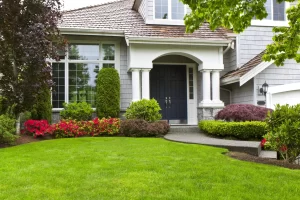The Best Plants for a Low-Maintenance Garden

Many gardeners are searching for low maintenance plants that still offer beauty and performance benefits.
Yarrow (Achillea millefolium) is an excellent low-maintenance solution to adding color and interest to a garden, being drought-tolerant, deer-proof and attracting beneficial insects which eat pests in your garden. Plus it makes for low maintenance shrubbery!
Oakleaf hydrangeas are easy to grow and tolerate dry periods well, making them long-lived plants.
Shasta Daisy
Leucanthemum superbum) perennial shasta daisies are easy to grow perennial flowers with many sizes, heights and flower colors available to choose from. They thrive in both sunlight or light shade environments and tolerate heat and humidity well. To prolong blooming period and preserve roots over winter, remove spent flowers regularly from blooming heads before mulching over them to preserve roots over winter.
Mixing compost into planting holes helps nourish roots and enhance soil drainage, and applying high quality granular fertilizer in early spring or after flowering provides ample nutrition.
Bees and butterflies adore this plant, which serves as a nitrogen-fixing legume that improves soil nutrient levels as it grows. Furthermore, it’s drought tolerant as well as deer- and rabbit-resistant!
Coneflower
Coneflowers are beloved midsummer displays, known for their large blooms that last well into autumn. Hardy perennials that thrive both in sun or shade environments and even cold weather conditions, planting coneflowers is an easy and quick way to add color quickly. Plant them directly in garden beds or containers as an instant color boost!
Are You Searching For Native Spiky Perennials to Add to Your Shade Garden? (Liatris Spicata). Once established, this flower requires no additional care beyond regular deadheading and simple pruning to maintain its beautiful flowers.
Hosta makes another wonderful shade option with its bold foliage in various hues and textures, such as puckered, quilted, strap-like leaves and multihued varieties. Most varieties require little fertilizer for optimal growth in full sun to partial shade areas with poor soils – plus deer and rabbit resistant varieties will withstand light frost without harm.
Cranesbill
Hardy geraniums (also called cranesbills) are perennials with long bloom seasons and an upright, compact habit, perfect for borders or containers. Choose cultivars offering pink and purple blooms for maximum diversity and suitability in your garden.
Walker’s Low Catmint (Nepeta x faassenii) is another low maintenance flower, providing fragrant foliage throughout the year and attracting pollinators without becoming invasive or spreading its seeds invasively. Taller varieties benefit from being cut back after blooming has concluded for an extra tidy appearance.
If you’re searching for an attractive shade-tolerant groundcover that requires little maintenance, look no further than Ajuga (Ajuga chinensis). Not only can it smother weeds but its varied colors make it suitable for any landscape – not to mention that its drought tolerant qualities and deer resistance make this an excellent addition!
Begonias
Begonias are hardy plants, adaptable to growing in almost any condition from shaded spots to full sunlight and even light frost, and many varieties have self-cleaning capabilities so no deadheading will be required throughout summertime.
Wax begonias such as the old-fashioned ‘Surefire White” (Begonia benariensis) grow beautifully both in shaded areas and full sunlight, offering vibrant green foliage with single pure white blooms that bloom nonstop from planting until frost. Perfect for beds, borders, and containers alike!
Newer hybrids such as Alabama Crimson (Begonia x Crimson Cordial), feature dark purple foliage with red flower clusters. They’re more tolerant to both heat and sun than their predecessors; plus they require minimal care beyond occasional pinching to prevent leggy growth.
Tuberous begonias are large-flowered hybrids with wide array of colors that can be grown both as annuals indoors or planted outside after soil temperatures warm sufficiently.








